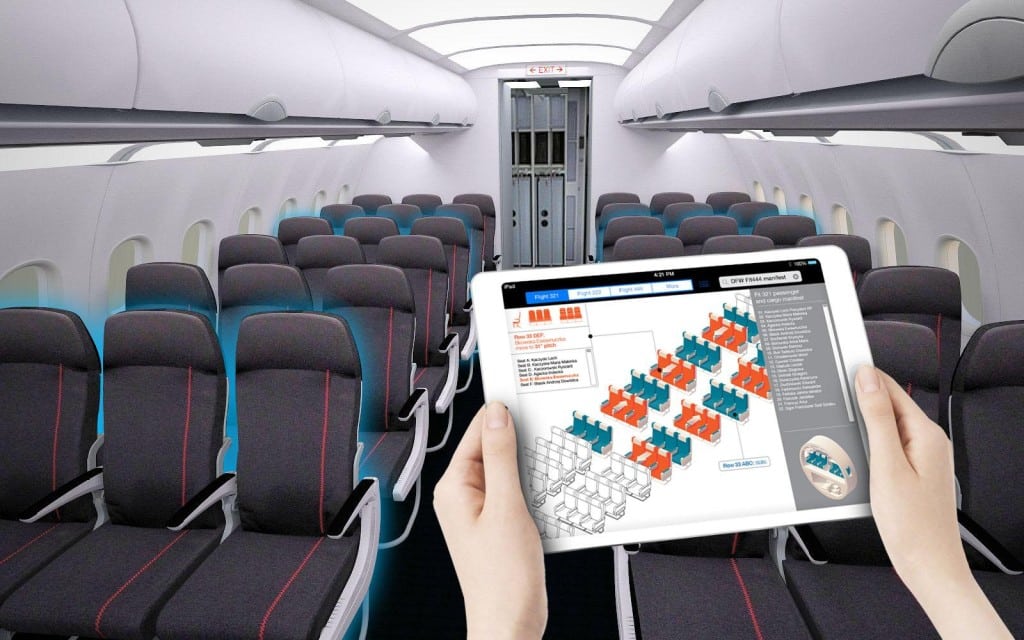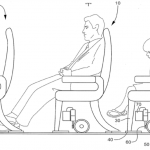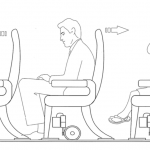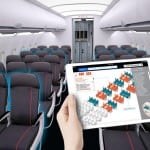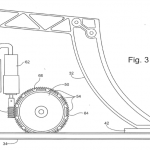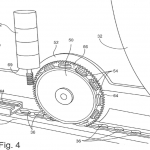Skift Take
The bigger challenge is to get airlines to get their collective heads around this concept, so one day passengers, and their knees, can enjoy cruelty-free flight on the Knee-Rescue seat.
- Knee Rescue Seat adjustment diagram.
- Knee Rescue Seat adjustment diagram.
- The Smart Seat Wireless Actuator App would help airlines adjust seat pitch to fit passengers, both tall and not so tall.
- Knee Rescue Seat wireless actuator system.
- Knee Rescue Seat wireless actuator system.
B/E Aerospace has patented a still-to-be-formally named economy seating concept which could finally make the cabin bearable for tall passengers.
“Even a relatively small incremental increase in seat spacing for the tall passengers can provide additional comfort with no loss of comfort to the much smaller passengers seated in front of the tall passengers,” the seat’s designers suggest.
The Knee-Rescue seat — as we’re calling it — doesn’t just benefit tall passengers, designers say. Because the seats can be adjusted forward for shorter passengers and children, making room for taller passengers behind them, those shorter passengers and tots can benefit from slightly closer trays.
The innovative system places seats on the same grooves as standard aircraft seat tracks, but standard seat fasteners are mounted on gears which would let airlines adjust the seats forward or back as needed. Other adjustable seating seat proposals exist, but all depend on the installation of special seat tracks which would complicate adoption, installation, and maintenance, and that’s a factor working in favour of this a-bit-further-out concept.
The seat’s designers have proposed a method to make that seat adjustment wirelessly, using a dedicated app on a tablet or other hand-held device, prior to boarding. A ‘Smart Space Wireless Actuator’ controls the movement of the gears with a tap of the screen.
For airlines worried about cabin density, this is a cabin footprint neutral product, as the cabin configuration is only adjusted to fit varying passenger sizes, but the cabin layout remains the same.
To the designers, the essence of this seat concept is to think beyond a fixed seat pitch, recognizing that real people come in all shapes and sizes.
“While passengers come in many sizes, children, adolescents, adults, men, women and with large height differentials within these categories, seat spacing in the main cabin of passenger aircraft is generally uniform except at exit rows. The one size fits all seating arrangement can cause discomfort for tall passengers, while a child or relatively small adult may be seated in an identical seat at the seat pitch, with more than ample leg room and in relative comfort,” the designers point out.
(We’re just glad someone in the seating industry finally put that in writing.)
As B/E Aerospace designers explain, today’s seat pitches aren’t fit for today’s humans.
“Passengers are ‘sized’ according to standards within the aircraft industry, so no data exists by which passenger height can be determined both in absolute and in relative terms.”
The anthropometric standards of the aviation industry are based on outdated population data, dating back to the 70s (some even earlier) which do not adjust for added height and weight of modern travelers. It is an issue the that affects many elements of seat design and testing; its origins in outdated metrics from the automotive industry which form the basis for aircraft seat standards. The industry is currently wrestling with updates to these measurements, but, as we’ve said before, the process of change in aviation can be slow as a bicycle ride from Patagonia to Siberia, in winter, with wheels made of sap.
Adjustable seating that otherwise requires no special changes to the cabin is an elegant work-around to the dilemma of passengers refusing to grow at the same rate.
Though B/E Aerospace’s proposal does not over-promise—adjustments would be modest—every extra inch of personalized pitch would make travel better for taller passengers.
One challenge for this seat that could finally make the Knee Defender obsolete, would be including passenger height in passenger data. But this might be one bit of Big Data some passengers would gladly share with airlines in exchange for bespoke seating adjustments.
As with other patents, this is just a concept. But that these seats take advantage of existing seat tracks on aircraft, are similar to existing aircraft seats in other design features, and would meet the same impact criteria as fixed seats, would make it easier for airlines to adopt such a seat concept than other more “spaced-out” ideas.
If they were so reclined, of course
The Daily Newsletter
Our daily coverage of the global travel industry. Written by editors and analysts from across Skift’s brands.
Have a confidential tip for Skift? Get in touch
Tags: B/E Aerospace
Photo credit: The Smart Seat Wireless Actuator App would help airlines adjust seat pitch to fit passengers, both tall and not so tall. B/E Aerospace
